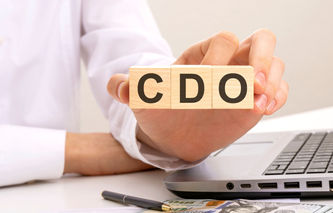The price of high quality bonds is directly related to interest rates. Investors looking to expand the diversity of a portfolio of stocks need to understand the relationship between prices and interest rates before buying bonds.
In this article, we're going to explain the relationship between interest rates, coupon rates, bond prices, current yield, and bond yield. As part of that explanation, we'll talk about the effect a bond's maturity date, as well as credit rating, can have on its market price.
Interest Rates and Bond Prices
While the price of junk bonds typically follows economic conditions, just like stocks; the price of investment quality bonds is usually linked to interest rates. In fact, there is an inverse correlation between interest rates and bond prices which can be explained using two rules of thumb:
When interest rates rise, the price of a bond will decline.
When interest rates fall, the price of a bond will rise.
Later in this article, we'll illustrate why this relationship exists.
Primary and Secondary Markets
There are two important capital exchanges for bond issues: the primary and secondary markets. The primary market is associated with the issuance of new bonds. These can be companies, or government agencies, that are raising funds through the sale of bonds. These investments are usually purchased through securities dealers.
The secondary bond market is where issues are traded before they mature. Except where noted, most of the relationships explained in this article apply to the secondary market.
Coupon Rates, Yields and Interest Rates
When a bond is first issued, it will pay a fixed rate of interest until maturity. That interest rate is referred to as the coupon rate. The coupon rate of any bond is a function of the credit risk of the issuer, as well as prevailing interest rates when the bond was first issued.
Over time, interest rates will change, but the coupon rate will remain the same, as will the payments to the bondholder. If interest rates fall, new bond issues will offer the market a lower coupon rate. The reverse is true if interest rates rise; coupon rates will increase. Since the coupon rate is fixed at a point in time, the price of bonds on the secondary market need to rise or fall to remain competitive with the primary market.
Let's see how these prices can move using two examples.
Example 1: Rising Interest Rates
In this first example, a $1,000 bond is issued with a coupon rate of 5%, resulting in a payment of $50 per year to the bondholder. If interest rates increase to 7%, then the perceived, and actual, value of the bond will decrease. An investor would never pay $1,000 for a bond with a coupon rate of 5% on the secondary market when new issues of similar quality are paying 7%.
Regardless of the prevailing interest rates, the coupon on this bond is fixed at 5%, and the holder will receive $50 per year. In order to remain competitive with new issues, the bond would sell at a discount to its face value on the secondary market. To provide a potential buyer with a 7% yield, the price of the bond would have to decrease to $50 / 0.07, or $714.29.
Example 2: Decreasing Interest Rates
In this second example, a $1,000 bond is issued with a coupon rate of 5%, resulting in a payment of $50 per year to the bondholder. If interest rates decline to 3%, then the perceived, and actual, value of the bond will increase. An investor would pay a premium for a $1,000 bond with a coupon rate of 5% on the secondary market when new issues of similar quality are paying 3%.
Here again, regardless of the prevailing interest rates, the coupon on this bond is fixed at 5%, and the holder will receive $50 per year. In order to remain competitive with new issues, the bond would sell at a premium to its face value on the secondary market. To provide a potential buyer with a 3% yield, the price of the bond would have to increase to $50 / 0.03, or $1,666.67.
Yield and Prices
Buyers need to understand the bond's yield before purchasing the security. There is an inverse relationship between the yield and its price. As demonstrated in the examples provided above:
When interest rates increase, the price of the bond will fall, and the yield will increase to remain competitive with prevailing interest rates.
When interest rates are falling, the price of the bond will rise, and the yield will decrease to remain competitive with prevailing interest rates.
Coupon Rates, Bond Yields, and Maturity Dates
Another factor that will influence the price of a bond is its maturity date. That's because when a bond matures, the holder of the issue will receive a payment equal to its face value. If the bond is selling at a premium to its face value, then the holder will receive less than the price paid. If the bond is selling at a discount, then the holder will be paid more than the price they paid. In other words, if the bond is selling at a discount or premium to its face value, then that difference in price will be another component of the bond's yield.
If the bond's maturity is in the distant future, this premium or discount will have less influence on the yield than if it matured in the near term. Once again, an example can be used to illustrate how the prices of bonds vary with maturities.
Example 3: Rising Interest Rates, Long and Short Maturity
In this third example, we're going back to the $1,000 bond issued with a coupon rate of 5% that pays the bondholder $50 per year. Once again, interest rates have risen to 7%. To provide a current yield of 7%, the price of the bond needs to drop to $714.29.
If that bond matured in ten years, then it would also return to the holder $1,000 - $714.29 or $285.71 at maturity. In this example, the yield to maturity would be 9.56%.
If that bond matured in thirty years, it would also return that same $285.71 at maturity, however, the yield to maturity drops to 7.39%.
At a practical level, investors will be more concerned about the bond yield to maturity than current yield. In the example above, a bond with 10 years to maturity and a coupon rate of 5% would be priced at $859 to produce a yield to maturity of 7%. The same bond with thirty years to maturity would be priced at $751.
From this example, we can derive two more bond-pricing guidelines:
When interest rates increase, the longer the time to maturity, the larger the discount saved. Bonds of shorter maturity will have smaller discounts.
When interest rates decrease, the longer the time to maturity, the larger the premium paid. Bonds of shorter maturity will have smaller premiums.
Note: All of the answers in the above examples were produced using our bond yield calculator.
Credit Ratings and Prices
All bonds are assigned ratings that qualify the quality of the issue. Ratings are standardized and assigned by credit rating agencies. The market relies on bond ratings provided by three agencies: Moody's, Standard & Poor's, and Fitch Ratings. The system used by each company to indicate the quality of a government or company's bond offering appears in the table below.
Bond Rating Grades
Credit Risk | Moody's | Standard and Poor's | Fitch Ratings |
Investment Grade | |||
Highest Quality | Aaa | AAA | AAA |
High Quality | Aa | AA | AA |
Upper Medium | A | A | A |
Medium | Baa | BBB | BBB |
Not Investment Grade | |||
Lower Medium | Ba | BB | BB |
Lower Grade | B | B | B |
Poor Grade | Caa | CCC | CCC |
Speculative | Ca | CC | CC |
No Payments / Bankruptcy | C | D | C |
In Default | C | D | D |
Note to Bond Rating Table: Moody's uses a modifier of 1, 2, or 3 to show relative standing in a category. Standard and Poor's and Fitch Ratings use a modifier of plus or minus.
There are roughly ten different credit ratings, or grades, that each agency publishes. The ratings range from Investment Grade to In-Default. In addition, each company offers refinements, or additional granularity, to these codes such as a plus or minus sign. These indicate direction or relative standing within a particular rating category.
When news about a company's bond rating is reported, they are talking about the credit quality of the issuer. When a company has a poor bond rating, they present a credit risk to the market, banks, and / or investors.
Investors can choose to lend companies money by purchasing their bonds. As a creditor of that same company, they are assuming a risk of repayment. As is the case with most investments, there is no free ride with bonds. Issues providing above average returns, such as junk bonds, will carry above average risk of default. Bonds of higher quality will return less, but the risk of default is lower too.




